Disease from eating fish. Ciguatera Fish Poisoning: Understanding Risks, Symptoms, and Prevention
What are the dangers of ciguatera fish poisoning. How can travelers protect themselves from biotoxins in tropical fish. What symptoms indicate possible fish poisoning. How is ciguatera poisoning treated.
The Hidden Dangers of Ciguatera Fish Poisoning
Ciguatera fish poisoning is a form of foodborne illness caused by consuming certain reef fish that contain ciguatoxins. These potent neurotoxins accumulate in fish through the marine food chain, originating from dinoflagellates that live on coral reefs. Despite being a significant health risk, particularly in tropical and subtropical regions, ciguatera poisoning often goes underrecognized.
Why is ciguatera poisoning so concerning? The toxins responsible for this illness are heat-stable, meaning that normal cooking methods do not destroy them. Additionally, affected fish do not exhibit any unusual appearance, smell, or taste, making it difficult for consumers to identify potentially dangerous seafood.

Key Facts About Ciguatera Fish Poisoning:
- It primarily affects reef fish in tropical and subtropical waters
- Over 400 species of fish can potentially carry ciguatoxins
- Symptoms can appear within minutes to 6 hours after consuming toxic fish
- Effects can last from several days to several weeks
- There is no specific antidote for ciguatera poisoning
High-Risk Fish Species and Geographical Areas
While numerous fish species can potentially carry ciguatoxins, some are more frequently associated with poisoning incidents. Which fish pose the greatest risk for ciguatera poisoning? The following species are often implicated:
- Groupers
- Barracudas
- Moray eels
- Red snappers
- Amberjacks
- Parrotfish
- Surgeonfish
- Triggerfish
The CDC strongly advises against consuming moray eels or barracudas due to their high risk of contamination. Other fish, such as sea bass and various tropical reef fish, may contain the toxin at unpredictable times, further complicating risk assessment.
Where is ciguatera poisoning most prevalent? The risk is highest in tropical and subtropical waters of:
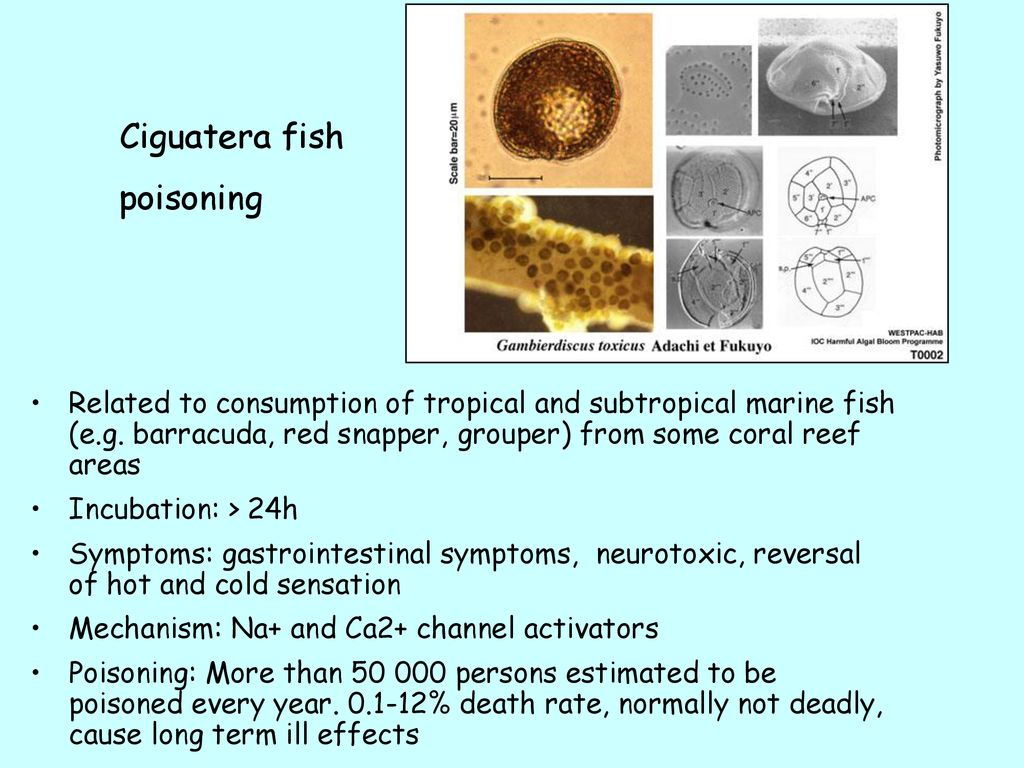
- The West Indies
- The Pacific Ocean
- The Indian Ocean
In the United States, cases have been reported in Hawaii, Guam, Puerto Rico, the U.S. Virgin Islands, and Florida. Isolated incidents have even occurred along the eastern seaboard, highlighting the need for awareness beyond traditional high-risk areas.
Recognizing the Symptoms of Ciguatera Poisoning
Identifying ciguatera poisoning quickly is crucial for proper treatment. What symptoms should individuals be aware of? The onset of symptoms typically occurs between a few minutes and 6 hours after consuming contaminated fish. Common signs include:
- Gastrointestinal distress (nausea, vomiting, diarrhea)
- Neurological symptoms (tingling sensations, dizziness)
- Cardiovascular abnormalities
In more severe cases, patients may experience:
- Muscle pains
- Temperature perception reversal (hot things feel cold and vice versa)
- Irregular heart rhythms
- Low blood pressure
It’s important to note that symptoms can persist for several days to several weeks, significantly impacting a person’s quality of life during this period.

Treatment Approaches for Ciguatera Fish Poisoning
How is ciguatera poisoning treated? Unfortunately, there is no specific antidote for ciguatoxins. Treatment primarily focuses on alleviating symptoms and managing complications. The approach typically includes:
- Supportive care to manage dehydration and electrolyte imbalances
- Medications to control nausea, vomiting, and diarrhea
- Pain management for neurological symptoms
- Monitoring and treatment of cardiovascular complications
Recovery time varies but generally takes several days to several weeks. In some cases, neurological symptoms may persist for months or even years, though this is less common.
Other Forms of Fish Poisoning: Tetrodotoxin and Scombroid
While ciguatera is a significant concern, it’s not the only type of fish poisoning that poses a risk to consumers. Two other notable forms are tetrodotoxin poisoning and scombroid poisoning.
Tetrodotoxin (Pufferfish) Poisoning
What is tetrodotoxin poisoning? Also known as pufferfish or fugu poisoning, this rare but potentially fatal condition is primarily associated with consuming pufferfish from Indo-Pacific waters. Cases have also been reported from pufferfish in the Atlantic Ocean, Gulf of Mexico, and Gulf of California.

Symptoms of tetrodotoxin poisoning typically appear between 20 minutes and 3 hours after ingestion and may include:
- Numbness of lips, tongue, face, and extremities
- Sensations of lightness or floating
- Headache and nausea
- Difficulty walking and speaking
- Muscle weakness and paralysis
- Respiratory distress
- Cardiac arrhythmia
Tetrodotoxin poisoning is a medical emergency that can lead to death within 4 to 6 hours if left untreated. Immediate medical attention is crucial for survival.
Scombroid Poisoning
What causes scombroid poisoning? This common form of fish poisoning results from consuming fish with high levels of histamine due to improper handling or storage. Fish commonly associated with scombroid poisoning include:
- Mahi mahi (dolphin fish)
- Tuna (albacore, bluefin, yellowfin)
- Mackerel
- Sardines
- Anchovies
- Marlin
Symptoms of scombroid poisoning typically appear rapidly, often within 30 minutes to an hour after consumption, and may include:
- Flushing of the face and neck
- Headache
- Heart palpitations
- Nausea and vomiting
- Diarrhea
- Itchy skin rash
While usually less severe than ciguatera or tetrodotoxin poisoning, scombroid poisoning can still cause significant discomfort and may require medical attention in severe cases.
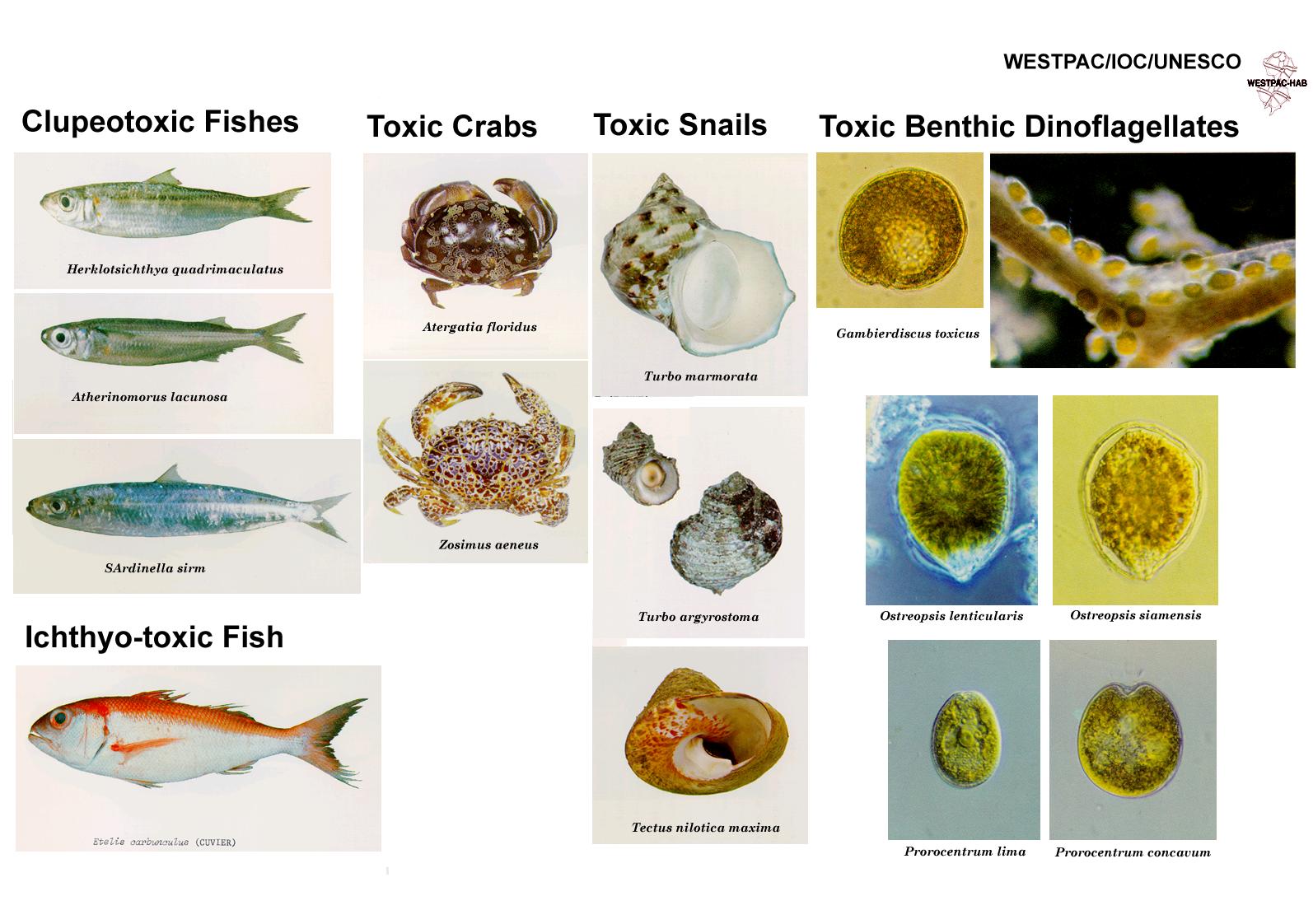
Preventing Fish Poisoning: Best Practices for Consumers
How can individuals protect themselves from fish poisoning? While it’s impossible to completely eliminate the risk, especially for ciguatera and tetrodotoxin poisoning, there are several steps consumers can take to reduce their chances of illness:
- Be aware of high-risk areas and fish species, especially when traveling to tropical regions.
- Avoid consuming large predatory reef fish, particularly barracuda and moray eel.
- When in doubt about the safety of a fish, err on the side of caution and choose an alternative.
- Purchase fish from reputable sources that follow proper handling and storage practices.
- For scombroid prevention, ensure fish is properly refrigerated or frozen from the time of catch to consumption.
- Learn to recognize the symptoms of fish poisoning and seek immediate medical attention if they occur after consuming fish.
For travelers to high-risk areas, consulting with local health authorities or experienced guides about safe fish consumption can provide valuable insights and reduce the risk of poisoning.
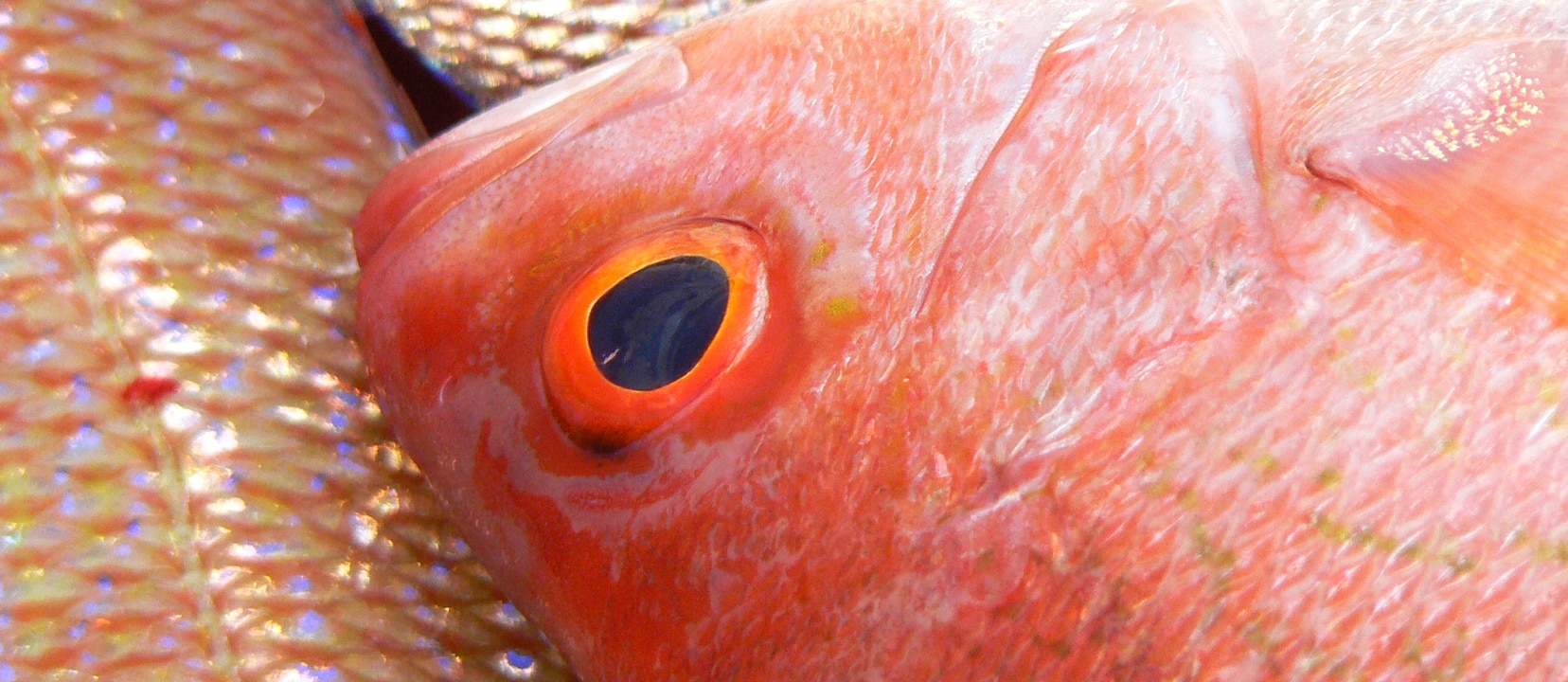
The Global Impact of Fish Poisoning
Fish poisoning, particularly ciguatera, has significant implications beyond individual health concerns. How does this issue affect communities and economies in affected regions?
In many tropical and subtropical areas, fishing is a crucial economic activity and fish is a staple food source. The threat of ciguatera poisoning can have severe repercussions:
- Economic impact on local fishing industries
- Reduced tourism in affected areas
- Nutritional challenges in communities reliant on fish as a primary protein source
- Increased healthcare costs associated with treating poisoning cases
Moreover, as climate change affects marine ecosystems, there’s concern that the range of ciguatoxin-producing organisms may expand, potentially increasing the geographical scope of the problem.
Research and Future Directions in Fish Poisoning Prevention
What progress is being made in combating fish poisoning? Researchers and health organizations are working on several fronts to address this issue:

- Developing more accurate and accessible testing methods for ciguatoxins in fish
- Investigating potential treatments and antidotes for ciguatera poisoning
- Improving understanding of the environmental factors that contribute to toxic algal blooms
- Enhancing surveillance and reporting systems to better track and respond to poisoning incidents
- Educating fishermen, fish vendors, and consumers about the risks and prevention strategies
These efforts aim to reduce the incidence of fish poisoning and mitigate its impact on affected individuals and communities. However, the complex nature of the problem, particularly for ciguatera poisoning, means that a comprehensive solution remains elusive.
Emerging Technologies in Fish Poisoning Detection
Can technology help in the fight against fish poisoning? Several promising approaches are being explored:
- Rapid test kits for detecting ciguatoxins in fish flesh
- Satellite monitoring of algal blooms to predict high-risk areas
- Genetic testing to identify fish species more accurately, reducing the risk of mislabeling
- Machine learning algorithms to analyze environmental data and predict ciguatera risk
While these technologies show promise, many are still in development or have limitations in practical application. Continued research and investment in this area are crucial for improving fish safety globally.
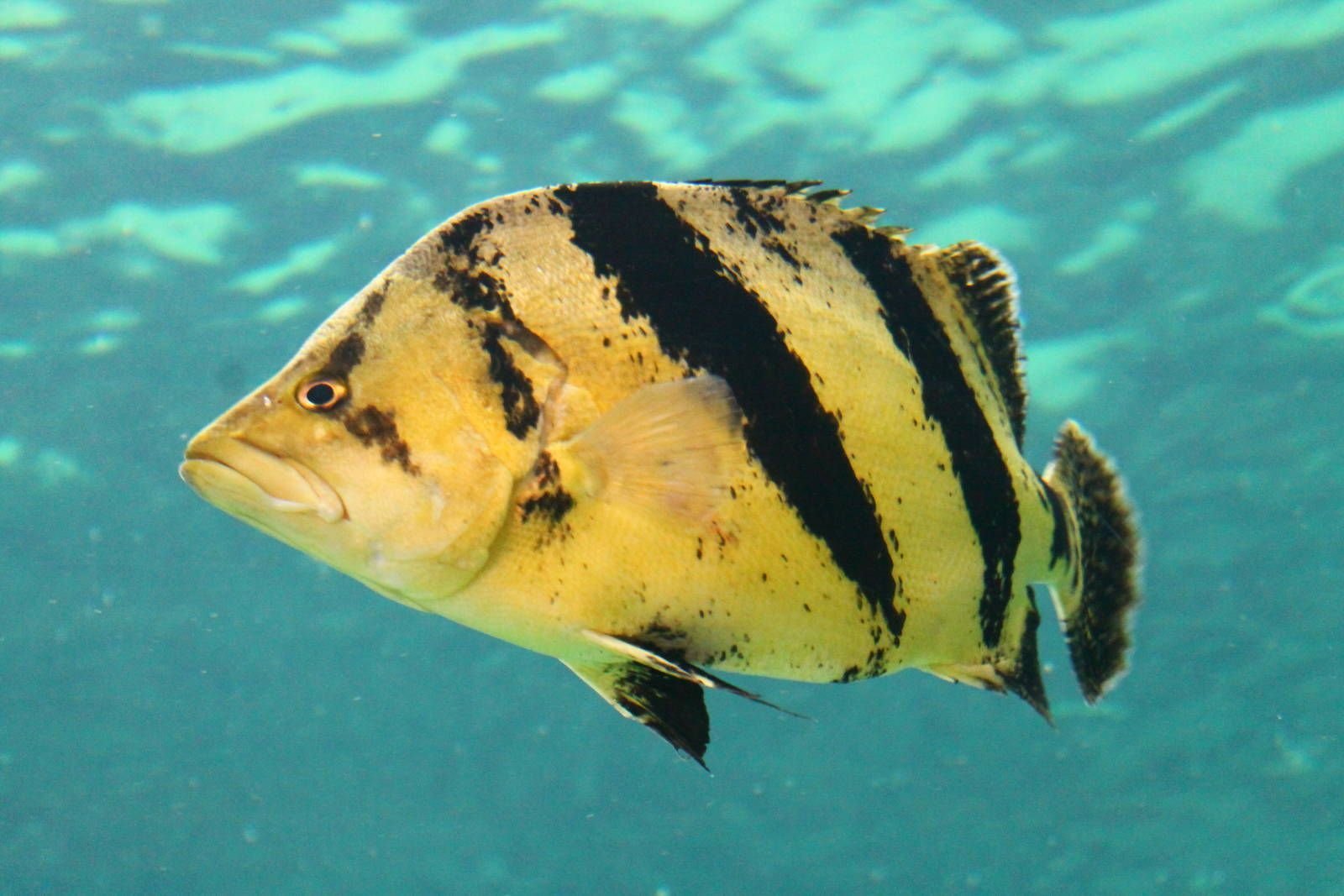
The Role of International Cooperation in Addressing Fish Poisoning
Given the global nature of fish trade and the widespread occurrence of ciguatera and other forms of fish poisoning, international cooperation is essential. How are countries working together to combat this issue?
- Sharing data and research findings on ciguatoxin occurrence and fish poisoning incidents
- Developing standardized testing and reporting protocols
- Collaborating on educational campaigns for travelers and local populations in high-risk areas
- Implementing regulations and guidelines for fish harvesting and trade to reduce poisoning risks
Organizations such as the World Health Organization (WHO) and the Food and Agriculture Organization (FAO) of the United Nations play crucial roles in coordinating these efforts and disseminating information globally.
Challenges in Global Fish Poisoning Management
Despite ongoing efforts, several challenges persist in managing fish poisoning on a global scale:
- Limited resources for monitoring and testing in many affected regions
- Difficulties in enforcing regulations across diverse fishing practices and markets
- Cultural and economic factors that influence fish consumption patterns
- The need for balance between public health concerns and the economic importance of fishing industries
Addressing these challenges requires a multifaceted approach involving public health officials, marine biologists, economists, and policymakers from around the world.

Consumer Awareness and Education: A Key to Prevention
While scientific research and regulatory efforts are crucial, consumer awareness plays a vital role in preventing fish poisoning. How can individuals become more informed about the risks?
- Stay updated on travel advisories and local fish consumption guidelines when visiting high-risk areas
- Learn to identify high-risk fish species and understand their potential dangers
- Be aware of the symptoms of different types of fish poisoning and when to seek medical help
- Support sustainable fishing practices that may help reduce the prevalence of toxic algal blooms
Educational initiatives targeting both local populations in affected areas and international travelers can significantly contribute to reducing the incidence of fish poisoning globally.
The Importance of Proper Fish Handling and Storage
While ciguatera poisoning can’t be prevented through proper handling (as the toxins are present in the living fish), other forms of fish poisoning, particularly scombroid, can be largely avoided through correct practices. What should consumers and food handlers know?
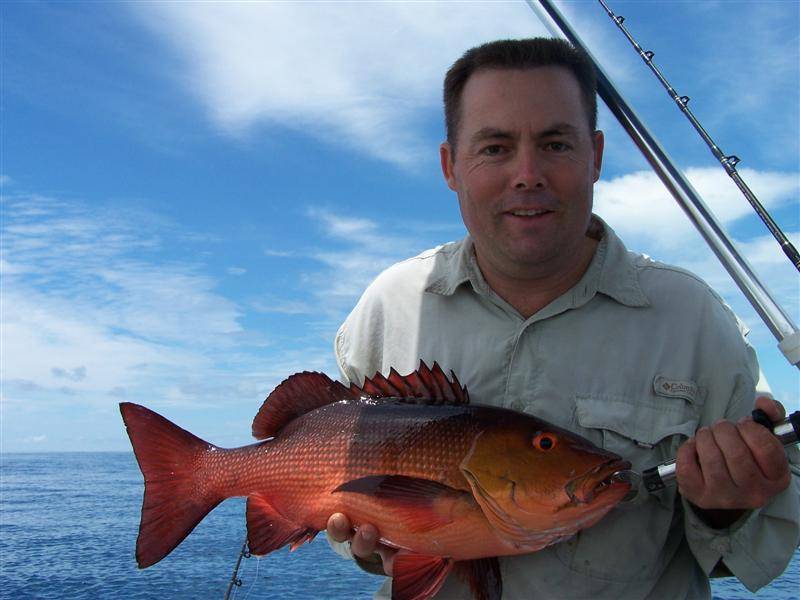
- Keep fish refrigerated at or below 40°F (4°C) from the time of catch until cooking
- If fishing recreationally, immediately place catch on ice
- When purchasing fish, ensure it has been properly stored and handled
- Cook fish thoroughly, although this won’t prevent ciguatera, it can reduce other foodborne risks
- Practice good hygiene when handling and preparing fish to prevent cross-contamination
By following these guidelines, consumers can significantly reduce their risk of scombroid poisoning and other fish-related illnesses, even if the threat of ciguatera remains.
Fish Poisoning | Johns Hopkins Medicine
At certain times of the year, various species of fish and shellfish contain poisonous biotoxins, even if well cooked. According to the CDC, it is considered an under-recognized risk for travelers, specifically in the tropics and subtropics.
Certain fish—groupers, barracudas, moray eel, sturgeon, sea bass, red snapper, amberjack, mackerel, parrot fish, surgeonfish, and triggerfish—can cause ciguatera fish poisoning. The CDC recommends never eating moray eel or barracuda. Other types of fish that may contain the toxin at unpredictable times include sea bass and a wide range of tropical reef and warm-water fish. Fish containing these toxins do not look, smell, or taste bad. Cooking, marinating, freezing, or stewing does not destroy the toxin.
The risk of ciguatera poisoning exists in all tropical and subtropical waters of the West Indies, the Pacific Ocean, and the Indian Ocean, where these reef fish are eaten.
Two other forms of poisoning can happen from naturally occurring toxins in fish: tetrodotoxin, sometimes called pufferfish poisoning or fugu poisoning, and scombroid poisoning.
Where is the risk of ciguatera poisoning the greatest?
Reef fish from the tropical and subtropical waters of the West Indies, the Pacific Ocean, and the Indian Ocean pose the greatest threat. Cases have been reported in the United States in Hawaii, Guam, Puerto Rico, U.S. Virgin Islands, and Florida. A few isolated cases of ciguatera poisoning have even been noted along the eastern seaboard of the United States.
More than 400 species of fish, particularly reef fish, are thought to contain the toxin for ciguatera poisoning.
What are the symptoms of ciguatera poisoning?
Symptoms of ciguatera poisoning generally appear between a few minutes and 6 hours after the toxic fish has been eaten. These include a variety of gastrointestinal, neurological, and cardiovascular abnormalities. The following are the most common symptoms of ciguatera poisoning. However, each individual may experience symptoms differently. Symptoms may include:
In more severe cases, the person may suffer muscle pains, dizziness, and sensations of temperature reversal, where hot things seem cold and cold things seem hot.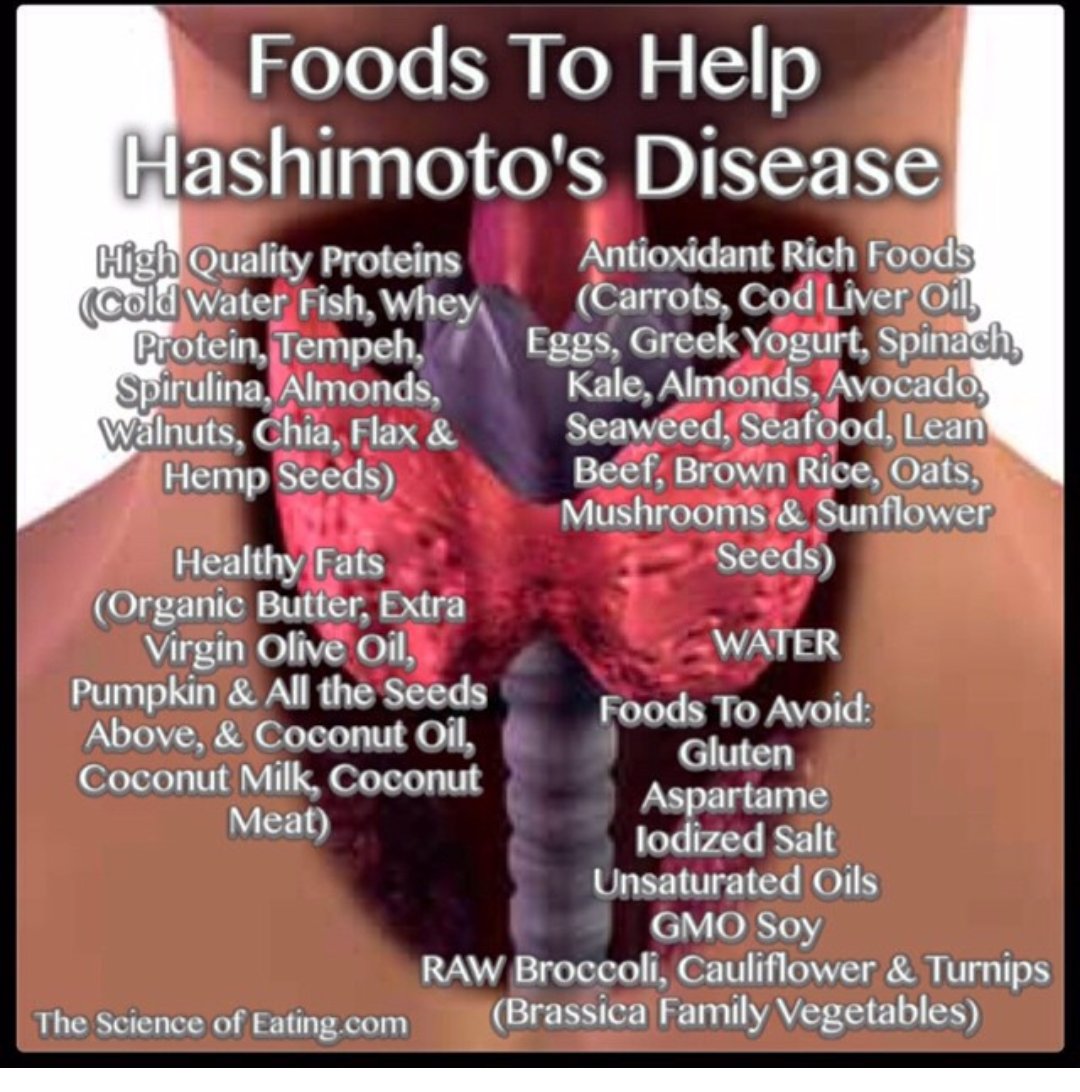 Irregular heart rhythms and low blood pressure may also be experienced. Ciguatera poisoning symptoms typically resolve within several days, but may last up to 4 weeks. The symptoms of ciguatera poisoning may resemble other medical conditions. Always talk with your healthcare provider for a diagnosis.
Irregular heart rhythms and low blood pressure may also be experienced. Ciguatera poisoning symptoms typically resolve within several days, but may last up to 4 weeks. The symptoms of ciguatera poisoning may resemble other medical conditions. Always talk with your healthcare provider for a diagnosis.
Treatment for ciguatera poisoning
Treatment for ciguatera poisoning involves relieving the symptoms and treating any complications. There is no specific antidote for the toxin itself. Generally, recovery takes from several days to several weeks.
What is tetrodotoxin?
Tetrodotoxin, also called pufferfish poisoning or fugu poisoning, is a much rarer form of fish poisoning. Yet, it is potentially very serious. This is almost exclusively associated with eating the pufferfish from waters of the Indo-Pacific regions. There have also been several reported cases of poisonings, including fatalities, from pufferfish from the Atlantic Ocean, Gulf of Mexico, and Gulf of California. Pufferfish poisoning is a continuing problem in Japan.
Pufferfish poisoning is a continuing problem in Japan.
What are the symptoms of pufferfish poisoning?
Symptoms generally appear between 20 minutes and 3 hours after eating the poisonous pufferfish. The following are the most common symptoms of pufferfish poisoning. However, each individual may experience symptoms differently. Symptoms may include:
Numbness of lips and tongue
Numbness of face and extremities
Sensations of lightness or floating
Headache
Nausea and vomiting
Abdominal pain
Diarrhea
Slurred speech
Difficulty walking
Extensive muscle weakness
Convulsions
Respiratory distress
Mental impairment
Cardiac arrhythmia
Death can happen within 4 to 6 hours of poisoning. It is essential to seek immediate medical attention.
It is essential to seek immediate medical attention.
Treatment for pufferfish poisoning
Treatment for pufferfish poisoning consists of limiting the body’s absorption of the toxin, relieving symptoms, and treating life-threatening complications. There is no known antidote for tetrodotoxin.
What is scombrotoxin?
Scombrotoxin, also called scombroid poisoning or histamine poisoning, happens after eating fish that contain high levels of histamine due to improper food handling. It remains one of the most common forms of fish poisoning in the U.S. and worldwide. These fish, which include mahi mahi (dolphin fish), albacore tuna, bluefin and yellowfin tuna, bluefish, mackerel, sardines, anchovy, herring, marlin, amberjack, and abalone, have high amounts of histidine. As a result of inadequate refrigeration or preservation, bacteria convert the histidine to histamine. This leads to scombroid poisoning. Contaminated fish may appear and taste fresh, although some may taste “peppery,” “spicy,” or “bubbly. ” The toxin may form even if the fish has only been temporarily stored at too high a temperature.
” The toxin may form even if the fish has only been temporarily stored at too high a temperature.
This form of fish poisoning happens worldwide in temperate and tropical waters.
What are the symptoms of scombroid poisoning?
Symptoms generally appear within minutes to an hour after eating affected fish. They typically last 3 hours, but can last several days. The following are the most common symptoms of scombroid poisoning. However, each individual may experience symptoms differently. Symptoms may include:
Tingling or burning sensations in the mouth
Rash on the face and upper body
Wheezing or shortness of breath
Drop in blood pressure
Throbbing headache
Hives and itching of skin
Nausea
Vomiting
Diarrhea
The symptoms of scombroid poisoning may resemble other medical conditions. Many cases of “fish allergy” are actually scombroid poisoning. Always talk with your healthcare provider for a diagnosis.
Many cases of “fish allergy” are actually scombroid poisoning. Always talk with your healthcare provider for a diagnosis.
Treatment for scombroid poisoning
Treatment for scombroid poisoning is generally unnecessary. Symptoms usually resolve within 12 hours and scombroid poisoning is rarely life-threatening. Treatment could include antihistamines, such as diphenhydramine and cimetidine.
Specific treatment for all fish and shellfish poisoning is based on:
Your overall health and medical history
Extent of the disease
Your tolerance for specific medicines, procedures, and therapies
Your opinion or preference
Facts on ciguatera fish poisoning
Factsheet
Disclaimer: The information contained in this factsheet is intended for the purpose of general information and should not substitute individual expert advice or the judgement of healthcare professionals.
Ciguatera fish poisoning (CFP) is a clinical syndrome caused by eating fish that have accumulated ciguatoxins (CTXs) due to feeding on toxic microalgae (Gambierdiscus spp. and Fukuyoa spp.) [1,2]. Traditional endemic regions for ciguatoxic fish include areas in the Caribbean Sea and the Pacific and Indian Oceans, but autochthonous outbreaks have also been reported in Europe (the Canary Islands and Madeira) [3-9]. Outbreaks in mainland European countries have been associated with the consumption of imported fish [10,11].
Ciguatera poisoning is not under routine surveillance in the EU, which is designed for communicable diseases and special health issues like antimicrobial resistance, but all unexpected, potentially serious cross-border biological threats to health are monitored by ECDC [12].
Ciguatoxins (CTXs)
Ciguatoxins (CTXs) activate voltage-gated sodium channels in cell membranes, increasing sodium ion permeability and depolarizing the nerve cell. CTXs are temperature-stable, so they are not destroyed by cooking or by freezing the fish. Furthermore, the toxins are colourless, odourless and flavourless, which make it impossible to taste or smell them [2,13].
CTXs are temperature-stable, so they are not destroyed by cooking or by freezing the fish. Furthermore, the toxins are colourless, odourless and flavourless, which make it impossible to taste or smell them [2,13].
Clinical features and sequelae
Clinical presentation varies according to the individual characteristics and the geographical origin of the CTXs. Gastrointestinal symptoms may precede or accompany neurological symptoms, which usually appear three to 48 hours after eating the contaminated fish. Symptoms may include nausea, vomiting, diarrhoea, abdominal cramps, paresthesia of lips, tongue and extremities, cold allodynia (burning pain caused by a normally innocuous cold stimulus), a metallic taste in the mouth, arthralgia, myalgia, pruritus without urticaria or erythema, muscle weakness, blurred vision, painful intercourse, hypotension and bradycardia [1,11,14].
Cold allodynia is considered especially characteristic of CFP, although it is not suffered by all patients. Neurological symptoms usually resolve within weeks, although some symptoms can last for months. Recurrent symptoms may occur following the ingestion of certain food or beverages like alcohol, nuts or non-toxic fish. CFP is rarely fatal, but death can occur in severe cases due to severe dehydration, cardiovascular shock or respiratory failure [1,11,14].
Neurological symptoms usually resolve within weeks, although some symptoms can last for months. Recurrent symptoms may occur following the ingestion of certain food or beverages like alcohol, nuts or non-toxic fish. CFP is rarely fatal, but death can occur in severe cases due to severe dehydration, cardiovascular shock or respiratory failure [1,11,14].
Epidemiology
Ciguatera is one of the most common foodborne poisonings related to finfish consumption but its true incidence is not known. The prevalence in endemic areas ranges from 0.1 percent of the population in continental lands (Queensland [Australia] or Florida [the United States of America]) to more than 50 percent in small South Pacific or Caribbean islands. The traditionally endemic regions are areas of the Caribbean Sea, and the Pacific and the Indian Oceans [1,14,15].
In Europe, several cases of CFP have been reported by travellers to endemic countries as well as through the consumption of imported contaminated fish in the past 20 years [10,11,16,17]. Ciguatera outbreaks due to the consumption of autochthonous fish have also been reported in Madeira (Portugal) and the Canary Islands (Spain) [3-9].
Ciguatera outbreaks due to the consumption of autochthonous fish have also been reported in Madeira (Portugal) and the Canary Islands (Spain) [3-9].
Global environmental changes (including climate change) have had a favourable impact on the distribution and proliferation of the microalgae that produce CTXs [18-20]. In addition, globalization of fish trade may also contribute to the spread of ciguatoxic fish and thus, increasing the risk for poisoning due to consumption of imported fish [10,11].
Transmission
CFP is caused by the consumption of herbivorous fish that feed on toxic microalgae (Gambierdiscus spp. and Fukuyoa spp.), which are attached to macrophytes or dead corals, and from carnivorous fish that have consumed toxic herbivorous fish [1,2].
Over 400 known fish species from tropical and subtropical waters have been classified as potential CTXs carriers. Examples of the fish most frequently associated with cases of ciguatera include barracuda, grouper, amberjack, red snapper, moray eel, hogfish, mackerel, surgeonfish, and parrotfish. Greater severity of illness is associated with eating fish head or organs. It is also advisable to avoid consuming fish viscera (including liver), eggs and skin [1,9].
Greater severity of illness is associated with eating fish head or organs. It is also advisable to avoid consuming fish viscera (including liver), eggs and skin [1,9].
Person-to-person transmission of CTXs is extremely rare, but transmission from mother to child during breastfeeding or across the placenta, as well as during sexual intercourse, has been described [21-25].
Diagnostics
Reliable laboratory testing to detect CTXs in clinical samples is not currently available, but they can be detected in the fish [26,27]. Semi-quantitative methods including in vitro cytotoxicity or the receptor-binding assays can detect all active toxin analogues that present a CTX-like toxicity. Although these assays do not provide information on toxin profiles, they can be applied as screening methods for CTXs. Liquid chromatography-tandem mass spectrometry (LC-MS/MS) methods allow specific detection of individual toxin analogues of Pacific, Caribbean and Indian Ocean CTXs, as well as CTXs quantification in fish extracts [28-30]. None of the currently available analytical methods have been formally validated. The maximum limits for CTXs in fish have not been established for regulatory purposes in the EU [26].
None of the currently available analytical methods have been formally validated. The maximum limits for CTXs in fish have not been established for regulatory purposes in the EU [26].
The diagnosis in humans is mainly based on recent history of fish consumption and clinical presentation. Diagnosis is supported if several individuals develop similar symptoms and report a common history of seafood consumption. As several other marine toxine poisonings cause partially similar symptoms as CFP, it is important to rule these out by obtaining a thorough history of recent seafood consumption. If the recent seafood consumption history identifies shellfish but not finfish consumption, other marine intoxications are more likely.
Case management and treatment
There is no specific treatment, which is based on symptomatic and supportive care [1,2]. Cases are usually not notified in national surveillance systems but may be reported to national poisoning centres. CFP may cause outbreaks among consumers who have bought marine fish from seafood markets or consumed toxic fish in restaurants. Toxic fish may spread across countries through internal markets once the fish has entered into the EU/EEA. Preventing toxic fish entering markets is the most effective way of preventing outbreaks [31].
Toxic fish may spread across countries through internal markets once the fish has entered into the EU/EEA. Preventing toxic fish entering markets is the most effective way of preventing outbreaks [31].
Public health control measures
In the event of suspected ciguatera poisoning triggering plans for testing fish, it is advisable to keep any food remnants or parts of the consumed fish frozen at -20ºC, and to contact the local food safety authority.
Fishermen should avoid fishing in areas where cases and outbreaks have occurred or where a suspicion of the presence of ciguatoxin-containing microalgae is reported. These precautions should be taken into account throughout the year, as ciguatera is not seasonal.
Infection control, personal protection and prevention
Avoiding the consumption of large predatory reef fish from affected areas could help prevent ciguatera, although in some areas the consumption of herbivorous fish may also present a high risk for poisoning. Local information about fish species causing ciguatera in the region should be considered and any available instructions by local food safety authorities followed.
Local information about fish species causing ciguatera in the region should be considered and any available instructions by local food safety authorities followed.
Since CTXs may be transmitted through breastfeeding and unprotected sexual intercourse, advice to refrain from breastfeeding and/or sexual intercourse (unprotected) while symptomatic should be considered.
If you suspect you have ciguatera, seek medical attention and consider avoiding the ingestion of certain beverages and food (mainly alcohol, fish and nuts) for six months after the poisoning, as these can cause recurrent symptoms. Patients with ciguatera symptoms should be asked thoroughly about the types of fish they have consumed as well as consumption times and places if possible.
Advice to travellers
The general recommendation is that travel health physicians and travellers should consult national travel guidelines and recommendations as the primary source of information.
Travellers to endemic areas should be aware of the risks related to the consumption of certain fish species (named above). Fish should only be bought from controlled seafood markets. The identification and removal of toxic fish from the food chain is a priority to prevent the occurrence of further cases.
Fish should only be bought from controlled seafood markets. The identification and removal of toxic fish from the food chain is a priority to prevent the occurrence of further cases.
Further reading
EuroCigua is a joint project by the European Food Safety Authority and Agencia Española de Seguridad Alimentaria y Nutrición (Spain’s Agency for Food Safety and Nutrition) on the risk characterisation of ciguatera in the European Union/European Economic Area (EU/EEA) [32].
The Food and Agriculture Organization and the World Health Organization’s joint report of the Expert Meeting on Ciguatera Poisoning, Rome 19–23 November 2018, has been published online as part of the AG Food Safety and Quality Series.
List of references
- Friedman MA, Fernandez M, Backer LC, Dickey RW, Bernstein J, Schrank K, et al. An Updated Review of Ciguatera Fish Poisoning: Clinical, Epidemiological, Environmental, and Public Health Management.
 Mar Drugs. 2017 Mar 14;15(3).
Mar Drugs. 2017 Mar 14;15(3). - Friedman MA, Fleming LE, Fernandez M, Bienfang P, Schrank K, Dickey R, et al. Ciguatera fish poisoning: treatment, prevention and management. Mar Drugs. 2008;6(3):456-79.
- Boada LD, Zumbado M, Luzardo OP, Almeida-Gonzalez M, Plakas SM, Granade HR, et al. Ciguatera fish poisoning on the West Africa Coast: An emerging risk in the Canary Islands (Spain). Toxicon. 2010 Dec;56(8):1516-9.
- Boucaud-Maitre D, Vernoux JP, Pelczar S, Daudens-Vaysse E, Aubert L, Boa S, et al. Incidence and clinical characteristics of ciguatera fish poisoning in Guadeloupe (French West Indies) between 2013 and 2016: a retrospective cases-series. Sci Rep. 2018 Feb 15;8(1):3095.
- Bravo J, Su FC, Ram AS, Acosta F. Ciguatera, an Emerging Human Poisoning in Europe. Journal of Aquaculture & Marine Biology [Internet]. 2015 [cited 2020 23 June]; 3(1). Available from: https://medcraveonline.com/JAMB/ciguatera-an-emerging-human-poisoning-in-europe.htm
- Costa PR, Estevez P, Castro D, Solino L, Gouveia N, Santos C, et al.
 New Insights into the Occurrence and Toxin Profile of Ciguatoxins in Selvagens Islands (Madeira, Portugal). Toxins (Basel). 2018 Dec 7;10(12).
New Insights into the Occurrence and Toxin Profile of Ciguatoxins in Selvagens Islands (Madeira, Portugal). Toxins (Basel). 2018 Dec 7;10(12). - Nunez D, Matute P, Garcia A, Garcia P, Abadia N. Outbreak of ciguatera food poisoning by consumption of amberjack (Seriola spp.) in the Canary Islands, May 2012. Euro Surveill. 2012 Jun 7;17(23).
- Otero P, Perez S, Alfonso A, Vale C, Rodriguez P, Gouveia NN, et al. First toxin profile of ciguateric fish in Madeira Arquipelago (Europe). Anal Chem. 2010 Jul 15;82(14):6032-9.
- Perez-Arellano JL, Luzardo OP, Perez Brito A, Hernandez Cabrera M, Zumbado M, Carranza C, et al. Ciguatera fish poisoning, Canary Islands. Emerg Infect Dis. 2005 Dec;11(12):1981-2.
- Centers for Disease Control and Prevention (CDC). Ciguatera fish poisoning – New York City, 2010-2011. MMWR Morbidity and mortality weekly report [Internet]. 2013 Feb 1 PMC4604878]; 62(4):[61-5 pp.]. Available from: https://pubmed.ncbi.nlm.nih.gov/23364271
- Friedemann M.
 Ciguatera fish poisoning outbreaks from 2012 to 2017 in Germany caused by snappers from India, Indonesia, and Vietnam. Journal of Consumer Protection and Food Safety. 2019 2019/03/01;14(1):71-80.
Ciguatera fish poisoning outbreaks from 2012 to 2017 in Germany caused by snappers from India, Indonesia, and Vietnam. Journal of Consumer Protection and Food Safety. 2019 2019/03/01;14(1):71-80. - REGULATION (EC) No 851/2004 OF THE EUROPEAN PARLIAMENT AND OF THE COUNCIL of 21 April 2004 establishing a European centre for disease prevention and control. Official Journal of the European Union [Internet]. 2004; L142:[11 p.]. Available from: https://eur-lex.europa.eu/legal-content/EN/ALL/?uri=celex%3A32004R0851
- Bidard JN, Vijverberg HP, Frelin C, Chungue E, Legrand AM, Bagnis R, et al. Ciguatoxin is a novel type of Na+ channel toxin. J Biol Chem. 1984 Jul 10;259(13):8353-7.
- Dickey RW, Plakas SM. Ciguatera: a public health perspective. Toxicon. 2010 Aug 15;56(2):123-36.
- Skinner MP, Brewer TD, Johnstone R, Fleming LE, Lewis RJ. Ciguatera fish poisoning in the Pacific Islands (1998 to 2008). PLoS Negl Trop Dis. 2011 Dec;5(12):e1416.
- Bavastrelli M, Bertucci P, Midulla M, Giardini O, Sanguigni S.
 Ciguatera fish poisoning: an emerging syndrome in Italian travelers. J Travel Med. 2001 May-Jun;8(3):139-42.
Ciguatera fish poisoning: an emerging syndrome in Italian travelers. J Travel Med. 2001 May-Jun;8(3):139-42. - Develoux M, Le Loup G, Pialoux G. A case of ciguatera fish poisoning in a French traveler. Euro Surveill. 2008 Nov 6;13(45):pii: 19027.
- Botana LM. Toxicological Perspective on Climate Change: Aquatic Toxins. Chem Res Toxicol. 2016 Apr 18;29(4):619-25.
- Gingold DB, Strickland MJ, Hess JJ. Ciguatera fish poisoning and climate change: analysis of National Poison Center Data in the United States, 2001-2011. Environ Health Perspect. 2014 Jun;122(6):580-6.
- Sangil C, Sansón M, Afonso-Carrillo J, Herrera R, Rodríguez A, Martín-García L, et al. Changes in subtidal assemblages in a scenario of warming: Proliferations of ephemeral benthic algae in the Canary Islands (eastern Atlantic Ocean). Marine Environmental Research. 2012 2012/06/01/;77:120-8.
- Bagnis RA, Legrand AM, Cameron J. Clinical features on 12,890 cases of ciguatera (fish poisoning) in French Polynesia.
 In: Gopalakrishnakone P, Tan CK, editors. Progress in Venom and Toxin Research: proceedings of the First Asia-Pacific Congress on Animal, Plant and Microbial Toxins, Singapore, 24-27 June 1987. Singapore: Faculty of Medicine, National University of Singapore; 1987. p. 372-84.
In: Gopalakrishnakone P, Tan CK, editors. Progress in Venom and Toxin Research: proceedings of the First Asia-Pacific Congress on Animal, Plant and Microbial Toxins, Singapore, 24-27 June 1987. Singapore: Faculty of Medicine, National University of Singapore; 1987. p. 372-84. - Blythe DG, de Sylva DP. Mother’s milk turns toxic following fish feast. JAMA. 1990 Oct 24-31;264(16):2074.
- Geller RJ, Olson KR, Senecal PE. Ciguatera fish poisoning in San Francisco, California, caused by imported barracuda. West J Med. 1991 Dec;155(6):639-42.
- Lange WR, Lipkin KM, Yang GC. Can ciguatera be a sexually transmitted disease? J Toxicol Clin Toxicol. 1989;27(3):193-7.
- Ting JY, Brown AF, Pearn JH. Ciguatera poisoning: an example of a public health challenge. Aust N Z J Public Health. 1998 Feb;22(1):140-2.
- Chain EPoCitF. Scientific Opinion on marine biotoxins in shellfish – Emerging toxins: Ciguatoxin group. EFSA Journal. 2010;8(6):1627.
- Estevez P, Sibat M, Leao-Martins JM, Reis Costa P, Gago-Martinez A, Hess P.
 Liquid Chromatography Coupled to High-Resolution Mass Spectrometry for the Confirmation of Caribbean Ciguatoxin-1 as the Main Toxin Responsible for Ciguatera Poisoning Caused by Fish from European Atlantic Coasts. Toxins (Basel). 2020 Apr 21;12(4).
Liquid Chromatography Coupled to High-Resolution Mass Spectrometry for the Confirmation of Caribbean Ciguatoxin-1 as the Main Toxin Responsible for Ciguatera Poisoning Caused by Fish from European Atlantic Coasts. Toxins (Basel). 2020 Apr 21;12(4). - Caillaud A, Eixarch H, de la Iglesia P, Rodriguez M, Dominguez L, Andree KB, et al. Towards the standardisation of the neuroblastoma (neuro-2a) cell-based assay for ciguatoxin-like toxicity detection in fish: application to fish caught in the Canary Islands. Food Addit Contam Part A Chem Anal Control Expo Risk Assess. 2012;29(6):1000-10.
- Estevez P, Castro D, Manuel Leao J, Yasumoto T, Dickey R, Gago-Martinez A. Implementation of liquid chromatography tandem mass spectrometry for the analysis of ciguatera fish poisoning in contaminated fish samples from Atlantic coasts. Food Chem. 2019 May 15;280:8-14.
- Estevez P, Leao JM, Yasumoto T, Dickey RW, Gago-Martinez A. Caribbean Ciguatoxin-1 stability under strongly acidic conditions: Characterisation of a new C-CTX1 methoxy congener.
 Food Addit Contam Part A Chem Anal Control Expo Risk Assess. 2020 Mar;37(3):519-29.
Food Addit Contam Part A Chem Anal Control Expo Risk Assess. 2020 Mar;37(3):519-29. - Sanchez-Henao JA, García-Álvarez N, Fernández A, Saavedra P, Silva Sergent F, Padilla D, et al. Predictive score and probability of CTX-like toxicity in fish samples from the official control of ciguatera in the Canary Islands. The Science of the total environment. 2019 Jul 10;673:576-84
- Agencia Espanola de Seguridad Alimentaria y Nutricion. Risk characterization of ciguatera food poisoning in Europe [cited 21 January 2021]. Available from: https://www.aesan.gob.es/en/AECOSAN/web/ciguatera/aecosan_inicio_ciguatera.htm
Page last updated
1 Feb 2021
Fish can become a source of human disease
Diseases caused by parasitic worms (helminths) are called helminthiases. Fish are parasitized by a large number of helminth species belonging to different classes: flukes (trematodes), tapeworms (cestodes), roundworms (nematodes), etc.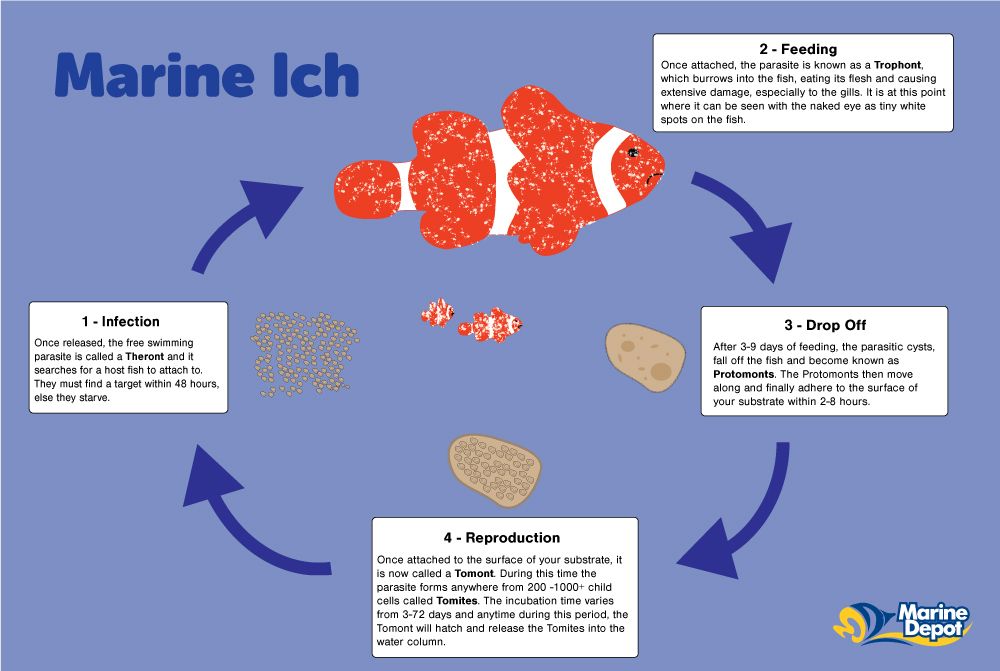 The most dangerous of them are:
The most dangerous of them are:
Opisthorchiasis. The disease is caused by small trematodes – opisthorchis, parasitizing in the bile ducts of the liver, in the pancreas, in the gallbladder of humans and carnivores. Sexually mature opisthorchis have a length of 6-14 mm and a width of 1.2-2 mm. In a human or animal body (the main host), opisthorchis secrete eggs that enter the intestines with bile, and then with feces into the external environment. In fish, opisthorchis larvae are localized in the muscles, covered with a membrane, turn into metacercariae, which can already cause infection of the main host if they get into his gastrointestinal tract alive. This occurs when eating raw, poorly processed fish. Opisthorchis can live in the body of the main host for a long time, while they cause significant harm to it. There is cirrhosis of the liver, cholecystitis, digestion is disturbed. Usually, the disease with opisthorchiasis begins acutely – the temperature reaches 39-40 °С. The incubation period is 2-4 weeks. Opisthorchiasis is a natural focal disease that is common where the intermediate host lives – the bitinia mollusk. This disease was recorded in Western Siberia, Kazakhstan, the Perm region, in the Volga region, in the basins of the Ob, Irtysh, Volga, Don, Neman, Kama, Dnieper, etc. Opisthorchis larvae are carried by ide, dace, roach and a number of other fish.
The incubation period is 2-4 weeks. Opisthorchiasis is a natural focal disease that is common where the intermediate host lives – the bitinia mollusk. This disease was recorded in Western Siberia, Kazakhstan, the Perm region, in the Volga region, in the basins of the Ob, Irtysh, Volga, Don, Neman, Kama, Dnieper, etc. Opisthorchis larvae are carried by ide, dace, roach and a number of other fish.
Diphyllobothriasis. Diphyllobothriasis is a helminthic disease of humans and carnivores. The causative agents of this disease are flat parasitic worms (cestodes). Mature helminths parasitize in the human intestine, while they can reach extremely long lengths (up to 10 m). Infected fish can become a source of disease for humans or animals. Basically, infection occurs when eating raw fish such as pike, burbot, perch, ruff. Tapeworms cause blockage of the intestines, poison a person with the products of their vital activity, accumulate vitamins in large quantities, while patients develop severe beriberi. There have been deaths due to diphyllobothriasis.
There have been deaths due to diphyllobothriasis.
Dioctophimosis. One of the most dangerous fish-borne diseases. People get sick, domestic animals – dogs, horses, cows.
The causative agent is a large nematode (giant pile) that parasitizes in the renal pelvis, ureters, and bladder of the main host. When larvae are eaten by fish (sabrefish, perch, barbel, shemay, thorn, pike, catfish, etc.), the latter become infected. Raw infected fish is a source of disease in humans and animals. It is important to note that dioctophymosis can also occur when infected oligochaetes (small free-living oligochaete worms that live in water) enter the human body along with drinking water. In this way, horses and cows can become infected.
Clonorchiasis. Caused by a trematode that lives in the liver, gallbladder and other organs of humans and animals. Development occurs with the participation of two intermediate hosts – a mollusk and a fish. More than 70 species of fish serve as the second intermediate host, through which the pathogen enters humans.
Prevention measures: The main cause of infection is eating raw contaminated fish. Conventional cooking – boiling or frying for 25-30 minutes – allows you to completely eliminate the threat of infection with the above diseases. When salting, the salt concentration should be at least 14% of the weight of the fish, the salting should be carried out for 2 weeks. Strong freezing can also destroy pathogens of opisthorchiasis and other diseases. The temperature must be maintained at the level of -18 … -20 ° C during the day. In no case should you feed raw fish, its insides to dogs, cats and other carnivores. They not only get sick themselves, but also become a source that supports the disease in the area, and contribute to its wider spread.
Food poisoning. When eating foods containing toxic substances of bacterial or non-bacterial origin, food poisoning occurs. Fish can also become a source of poisoning. Much attention should be paid to the storage of caught fish.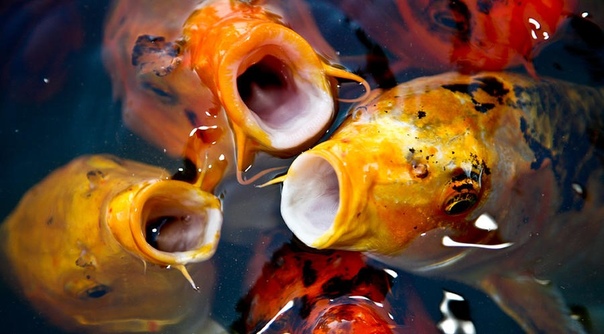 Cooling, careful packaging prevent contamination, significantly reduce the risk of food poisoning. Most fish diseases are not dangerous to humans, but a sick fish can contain a lot of bacteria in its body. Such fish quickly deteriorates during storage, has a less attractive appearance, and should not be eaten. Ulcers, hemorrhages, ruffling of scales, dropsy, bloating of the abdomen, bulging eyes can serve as a sign of fish disease. In poor-quality fish, the skin is dull, covered with dirty gray mucus. The membranes of the fins are destroyed at the ends or completely. The gills are dirty gray in color, covered with opaque mucus, with an unpleasant putrefactive odor. The muscles are flabby, with pressure on the skin, a hole remains. When cooked, a cloudy broth with an unpleasant odor is obtained. This fish is not edible. Food poisoning occurs when eating foods, including fish, contaminated with certain types of pathogens: salmonella, colibacilli, proteus, staphylococci, etc.
Cooling, careful packaging prevent contamination, significantly reduce the risk of food poisoning. Most fish diseases are not dangerous to humans, but a sick fish can contain a lot of bacteria in its body. Such fish quickly deteriorates during storage, has a less attractive appearance, and should not be eaten. Ulcers, hemorrhages, ruffling of scales, dropsy, bloating of the abdomen, bulging eyes can serve as a sign of fish disease. In poor-quality fish, the skin is dull, covered with dirty gray mucus. The membranes of the fins are destroyed at the ends or completely. The gills are dirty gray in color, covered with opaque mucus, with an unpleasant putrefactive odor. The muscles are flabby, with pressure on the skin, a hole remains. When cooked, a cloudy broth with an unpleasant odor is obtained. This fish is not edible. Food poisoning occurs when eating foods, including fish, contaminated with certain types of pathogens: salmonella, colibacilli, proteus, staphylococci, etc.
Compliance with veterinary and sanitary, sanitary and hygienic requirements is a reliable preventive measure against poisoning and food poisoning. When buying fish products, keep an eye on the expiration date, the integrity of the packaging, ask the sellers for a quality certificate, a veterinary accompanying document, and the conclusion of a laboratory of veterinary and sanitary examination. Do not purchase fish products in unidentified places of trade, by doing this you will protect yourself and your family!!!
When buying fish products, keep an eye on the expiration date, the integrity of the packaging, ask the sellers for a quality certificate, a veterinary accompanying document, and the conclusion of a laboratory of veterinary and sanitary examination. Do not purchase fish products in unidentified places of trade, by doing this you will protect yourself and your family!!!
Chief Veterinarian of the Zernograd Branch
Ph.D.
Maria Andreevna Raevskaya
Diseases transmitted with seafood – FBUZ “Center for Hygiene and Epidemiology in the Krasnoyarsk Territory”
There is no doubt
that fish is one of the healthiest
products,
which should be present in the diet of every person of any age. However, it should be remembered that without
appropriate heat treatment, fish can become a source of hazardous
diseases. This must be taken into account and lovers of the recently become very
popular Japanese cuisine, which often includes raw fish.
Poor quality
or poorly processed fish can cause helminthic diseases and
poisoning. There are more than a dozen different helminths that can
become infected through the use of this product, but the most common
only some of them, such as – opisthorchiasis.
Opisthorchiasis – this type of helminthiasis is considered the most
common in Russia. The causative agent of the disease is the Siberian
(or cat) fluke, which can parasitize not only humans, but also
in cats. Infected with opisthorchiasis when using poorly processed
fish of the carp family (crucian carp, bream, carp, carp, tench, etc.). pathogens
diseases affect the liver and biliary system, leading to severe
consequences for the whole organism. There are acute and chronic opisthorchiasis.
Symptoms of opisthorchiasis
The acute form of the disease usually manifests itself after 2-3
weeks after eating poorly processed fish and can last up to 2
months. There is a fever, muscle aches, which may resemble SARS, but
a little later, a rash appears on the body (urticaria), pain in the right hypochondrium, and
there is also an increase in the liver and gallbladder. Digestive disorders
Digestive disorders
manifest as nausea, vomiting, diarrhea, flatulence. In some cases
acute opisthorchiasis occurs with lung damage as asthmatic bronchitis.
Incorrect or no treatment symptoms
diseases subside on their own, but this does not mean that a person
is recovering. This most likely indicates the transition of the disease to
chronic form.
Chronic
opisthorchiasis
The chronic form of the disease can occur more than one
a dozen years and it manifests itself with symptoms of damage to the liver, biliary tract
and pancreas. Patients complain of constant pulling or
paroxysmal pain in the right hypochondrium, sometimes resembling biliary colic.
On palpation of the liver and gallbladder, there is an increase in their size and
soreness. Patients complain of nausea, stool disorders, worsening
appetite. The stomach and intestines are involved in the pathological process, which
manifested by symptoms of gastroduodenitis.
Over time, the activity of the nervous
system, patients quickly get tired, become irritable, complain of
headache, insomnia. Attention is drawn to the tremor of the hands, eyelids, tip
Attention is drawn to the tremor of the hands, eyelids, tip
language, and sometimes such neurological symptoms even come to the first
plan, in connection with which the patient may be misdiagnosed.
Diphyllobothriasis
Diphyllobothriasis is a disease caused by
wide tapeworm, which can parasitize in the human intestine several
decades. The parasite can reach a length of 9meters, but there are
cases when a wide ribbon up to 15 meters long is found. Infection
can occur when eating freshwater fish (perch, burbot, pike and
etc.).
Setter
the period is sometimes extended up to 2 months. Disease symptoms appear
gradually, patients experience nausea, vomiting, abdominal pain, worsening
appetite and body temperature may rise. Due to the fact that the incubation
the period of diphyllobothriasis is quite long, in many cases these symptoms
taken for ordinary food poisoning and not
are associated with cases of eating fish in the past.
Gradually
there is a general deterioration in well-being, weakness, fatigue increases,
glossitis occurs (bright red, painful cracks are visible on the tongue, later
papillae atrophy and the tongue becomes “varnished”), cardiac
activities. An in-depth examination reveals signs of B12-deficiency anemia. At
An in-depth examination reveals signs of B12-deficiency anemia. At
prolonged course of diphyllobothriasis due to the accumulation of a large amount
helminths in the lumen of the small intestine may develop obstructive intestinal
obstruction requiring urgent surgical intervention.
Anisakidosis
Pathogens
anisakidosis can be found in both freshwater and marine fish and in
large crustaceans. Therefore, the statement that there are no parasites in salt water and
sea fish can be eaten raw – incorrect. The largest number
cases of anisakiasis are recorded in Korea and Japan, where diets are traditionally
raw fish and other seafood is used.
Setter
the disease period is quite short, can range from several hours to
14 days. The severity of symptoms of anisakiasis depends on the localization of the parasite in the
gastrointestinal tract. If the larvae are in the intestinal lumen, then
symptoms of the disease may be mild (abdominal pain, unstable
stool, flatulence). When the larvae are localized in the stomach (the most common
When the larvae are localized in the stomach (the most common
often) patients complain of pain in the epigastric region, nausea, vomiting,
sometimes with an admixture of blood, fever, sometimes urticaria occurs. With severe
the course of anisakiasis may resemble a picture of an acute abdomen.
Prevention
helminthiases
Sufficient
cooking will avoid infection. Infections with helminths
the use of fish can be avoided by observing the simple rules of its culinary
processing and processing of kitchen utensils.
Helminths
die at high temperatures and freezing. Before eating
fish should be thoroughly fried, boiled for at least 15 minutes (provided that
the fish is cut into pieces, when cooking a whole, especially large fish, this
time, of course, increases) or keep in the freezer for at least 3 days. At
salted fish should be kept in salt brine for 2 weeks.
None
case, you can not eat raw fish, try raw minced fish when
cooking dishes from it (it’s better not to add a little salt than to get infected with a dangerous
helminthiasis).

 Mar Drugs. 2017 Mar 14;15(3).
Mar Drugs. 2017 Mar 14;15(3). New Insights into the Occurrence and Toxin Profile of Ciguatoxins in Selvagens Islands (Madeira, Portugal). Toxins (Basel). 2018 Dec 7;10(12).
New Insights into the Occurrence and Toxin Profile of Ciguatoxins in Selvagens Islands (Madeira, Portugal). Toxins (Basel). 2018 Dec 7;10(12). Ciguatera fish poisoning outbreaks from 2012 to 2017 in Germany caused by snappers from India, Indonesia, and Vietnam. Journal of Consumer Protection and Food Safety. 2019 2019/03/01;14(1):71-80.
Ciguatera fish poisoning outbreaks from 2012 to 2017 in Germany caused by snappers from India, Indonesia, and Vietnam. Journal of Consumer Protection and Food Safety. 2019 2019/03/01;14(1):71-80.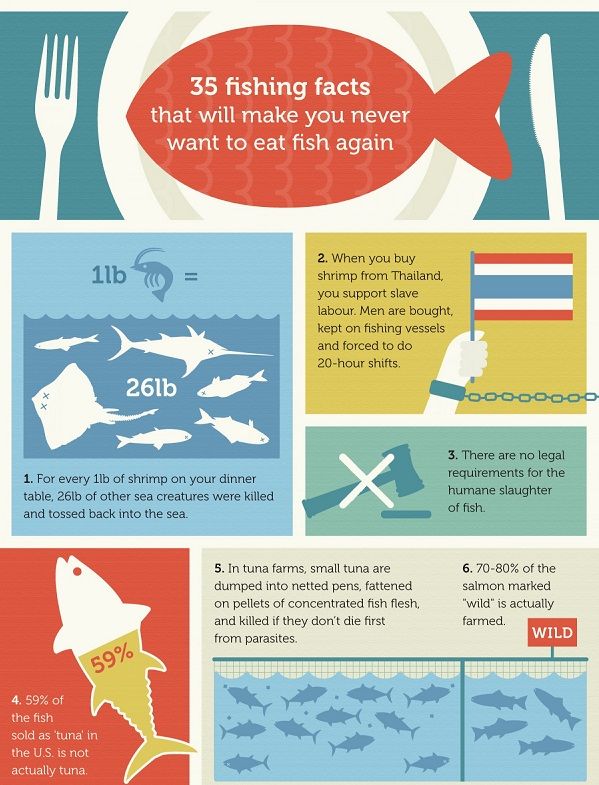 Ciguatera fish poisoning: an emerging syndrome in Italian travelers. J Travel Med. 2001 May-Jun;8(3):139-42.
Ciguatera fish poisoning: an emerging syndrome in Italian travelers. J Travel Med. 2001 May-Jun;8(3):139-42. In: Gopalakrishnakone P, Tan CK, editors. Progress in Venom and Toxin Research: proceedings of the First Asia-Pacific Congress on Animal, Plant and Microbial Toxins, Singapore, 24-27 June 1987. Singapore: Faculty of Medicine, National University of Singapore; 1987. p. 372-84.
In: Gopalakrishnakone P, Tan CK, editors. Progress in Venom and Toxin Research: proceedings of the First Asia-Pacific Congress on Animal, Plant and Microbial Toxins, Singapore, 24-27 June 1987. Singapore: Faculty of Medicine, National University of Singapore; 1987. p. 372-84. Liquid Chromatography Coupled to High-Resolution Mass Spectrometry for the Confirmation of Caribbean Ciguatoxin-1 as the Main Toxin Responsible for Ciguatera Poisoning Caused by Fish from European Atlantic Coasts. Toxins (Basel). 2020 Apr 21;12(4).
Liquid Chromatography Coupled to High-Resolution Mass Spectrometry for the Confirmation of Caribbean Ciguatoxin-1 as the Main Toxin Responsible for Ciguatera Poisoning Caused by Fish from European Atlantic Coasts. Toxins (Basel). 2020 Apr 21;12(4). Food Addit Contam Part A Chem Anal Control Expo Risk Assess. 2020 Mar;37(3):519-29.
Food Addit Contam Part A Chem Anal Control Expo Risk Assess. 2020 Mar;37(3):519-29.